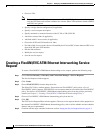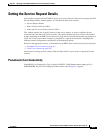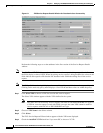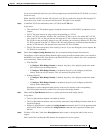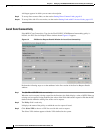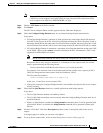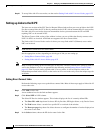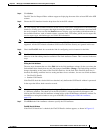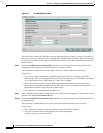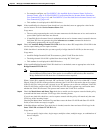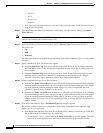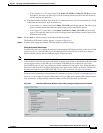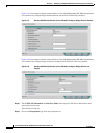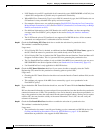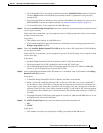
6-10
Cisco IP Solution Center L2VPN and Carrier Ethernet User Guide, 6.0
OL-21636-01
Chapter 6 Managing a FlexUNI/EVC ATM-Ethernet Interworking Service Request
Setting the Service Request Details
Figure 6-3 FlexUNI Details Window
All of the fields in the FlexUNI Details screen are enabled based on the policy settings. For example, if
Both Tags is selected in the policy and is editable, then the Match Inner and Outer Tags check box will
be selected and editable in this window. The behavior is similar for the other attributes in the FlexUNI
Details window
Step 8 Check the AutoPick Service Instance ID check box to specify that the service instance ID will be
autogenerated and allocated to the link during service request creation.
If the check box is unchecked, you must specify the service instance ID (see the next step).
Usage notes:
• The service instance ID represents an Ethernet Flow Point (EFP) on an interface in the EVC
infrastructure. The service instance ID is locally significant to the interface. This ID has to be unique
only at the interface level. The ID must be a value from 1 to 8000.
• There are no resource pools available in ISC from which to allocate the service instance IDs.
• In the case of a manually provided service instance ID, it is the responsibility of the operator to
maintain the uniqueness of the ID at the interface level.
• This attribute is not displayed for IOS XR devices.
Step 9 If the AutoPick Service Instance ID check box is not checked, enter an appropriate value for the service
instance ID in the Service Instance ID field.
Step 10 Check the AutoPick Service Instance Name check box to specify that the service instance name will
be autogenerated.
If the check box is unchecked, you can specify the service instance name (see the next step).
Usage notes:
• If the check box is checked, the Service Instance Name text field is disabled.
• The service instance name is autogenerated in the following pattern:
CustomerName_ServiceRequestJobID.



